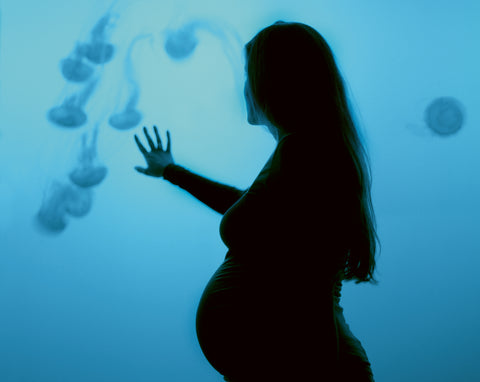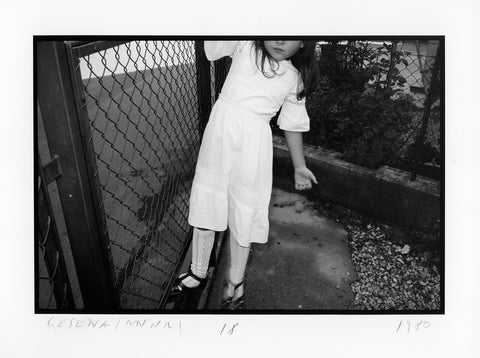 Daily #36, 2022
Daily #36, 2022
In his influential essay “L’effet de réel” (1968), Roland Barthes considers the function of the detail in narrative, both fictional and historical (his test cases are Flaubert and Michelet respectively). In a narrative, Barthes argues, everything is expected to signify, and incidental details that seem not to signify do so nonetheless, for what they signify is insignificance—the insignificance of the mere facts of the contingent world—which helps the author create an impression of reality.1 When a photograph is bound to the world indexically—a condition once understood to be necessary, even natural, to the medium—it refers to the world intrinsically; in a sense it is nothing but details and so can only produce “effects of the real.” With his imperfect models Thomas Demand stretches this assumed connection between photography and reality, but he does not cut it absolutely. Like his other images, The Dailies give us only schematic illusions, as the discrepancies between the constructions in the pictures and the things in the world soon become apparent. For Fried this is essential: the images are thereby able to register “sheer artistic intention” because they contain only the details that Demand mandates—that he literally makes. Yet this fact does not explain why he includes some details and excludes others.
Demand likens The Dailies to haiku, which suggests a degree of descriptive detail, and many of his images do possess a poetic concision.2 For example, the green seeds on the brown wood in Daily #11 call up Imagist poems inspired by haiku, such as the famous lines of Ezra Pound—“The apparition of these faces in the crowd / Petals on a wet, black bough”—and William Carlos Williams—“so much depends / upon / a red wheel barrow / glazed with rain / water / beside the white / chickens.”3 Some Dailies are apparitional in this way—the dance of the colored pins on the clothesline in Daily #17 is so for me, as is the curl of the yellow notes on the brown pole in Daily #34—and this quality invites us to reflect on the status of such little epiphanies today. Can the ephemeral still touch the eternal, as Baudelaire proposed 150 years ago in his inaugural charge to modern artists? (“By ‘modernity,’” runs his celebrated line, “I mean the ephemeral, the fugitive, the contingent, the half of art whose other half is the eternal and the immutable.”)4 More modestly, can everyday things still prompt thoughtful insights in an administered world? Imagist poetry arose in the second decade of the twentieth century during an intensive period of technological transformation (often called the Second Industrial Revolution), and it stressed perception precisely because perception was threatened by this increased mediation. Like its contemporaries Russian formalism and phenomenological philosophy, Imagism sought to refresh the human sensorium against a second nature on the rise. So, too, does Demand a century later in The Dailies, but the great difference is that he accepts his more mediated world as a given, and proceeds from there.
 Daily #34, 2020
Daily #34, 2020
For Demand his photographs are also about recognition. “My sculptures are only imitations,” he says, “dummies [Attrappen] made of things that bear precisely the right number of symbols to be recognized as such.”5 His play with detail, then, not only underscores that his images are fabrications; more importantly, it activates them as tests of our looking, understanding, and remembering. (“Dummies” is a suggestive term in this respect: it is as though we are asked not to caption his photographs so much as speak them, ventriloquize them.) Distraction is “the actual state of what we absorb as news,” Demand comments in a statement that refers to “The Histories” but pertains to The Dailies as well. “What is decisive,” he continues, are “the blurred traces left in the media by the incidents” that they relay. On the one hand, distraction produces “a very diffuse sense of dullness”; on the other, it allows the “blurred traces” of incidents to “lodge in the memory,” a memory that Demand takes to be collective as well as individual. Could it be that these blurred traces are somehow evoked in the blunted details of his photographs? Certainly our shared media memory is a deep subject of his work, and The Dailies do point to a mnemonic dimension buried in the trivia of our lives.
“Blurred traces” is a near oxymoron, but it is useful as such. In order to be potent, a detail, a punctum in the Barthesian sense, need not be precise; for example, there are blurred traces with traumatic force in Andy Warhol and Gerhard Richter, and so there are in Demand too.6 Not only is the symptom lodged in the detail, but often enough death is as well; frequently it is the little things that kill us. In The Death of Ivan Ilyich (1886), Tolstoy leads his protagonist to this recognition, as Ilyich watches with anguish as an innocuous bump become a relentless cancer that slowly stalks him and finally takes him away. He calls this mundane-mortal object It, and one might scan The Dailies for similar signs of things with potentially deadly force. Might It be there, for instance, in the gangrenous water in the glass in Daily #20, or the overly orange splotch on the pavement in Daily #33?
 Daily #33, 2019
Daily #33, 2019
Notes
1. Roland Barthes, “The Reality Effect” (1968), in The Rustle of Language, trans. Richard Howard (New York: Hill and Wang, 1986). “Semiotically,” Barthes writes, “the ‘concrete detail’ is constituted by the direct collusion of a referent and a signifier; the signified is expelled from the sign, and with it, of course, the possibility of developing a form of the signified; i.e., narrative structure itself” (p. 147). Here the detail almost obstructs meaning, and this opposition recalls not only that of “the world is seen” versus “I see the world,” but also that between description and narration, which Lukács used to distinguish between naturalist fiction (which he deplored) and realist fiction (which he championed because it involves a narrative understanding of the social world). In this sense Demand is more realist than naturalist.
2. Demand in Milliard, “Same Author, Different Form.
3. Ezra Pound, “In a Station of the Metro” (1913); William Carlos Williams, “The Red Wheelbarrow” (1923).
4. Charles Baudelaire, “The Painter of Modern Life” (1863), in The Painter of Modern Life and Other Essays, trans. and ed. Jonathan Mayne (London: Phaidon, 1964), p. 13.
5. Demand, in “A Conversation Between Alexander Kluge and Thomas Demand,” in Thomas Demand (London: Serpentine Gallery, 2006), pp. 51–112. Unless otherwise noted, all further Demand and Kluge quotations are from this text.
6. On this point see my The First Pop Age: Painting and Subjectivity in the Art of Hamilton, Lichtenstein, Warhol, Richter, and Ruscha (Princeton: Princeton University Press, 2012). As Demand has suggested on a few occasions, the “punctal” is not opposed to the banal.
Excerpt from Hal Foster’s essay ‘Dailiness’ from The Dailies by Thomas Demand
Flexibound hardcover with tipped-in image
21.5 x 24.5 cm, 96 pages
€45 £40 $50






